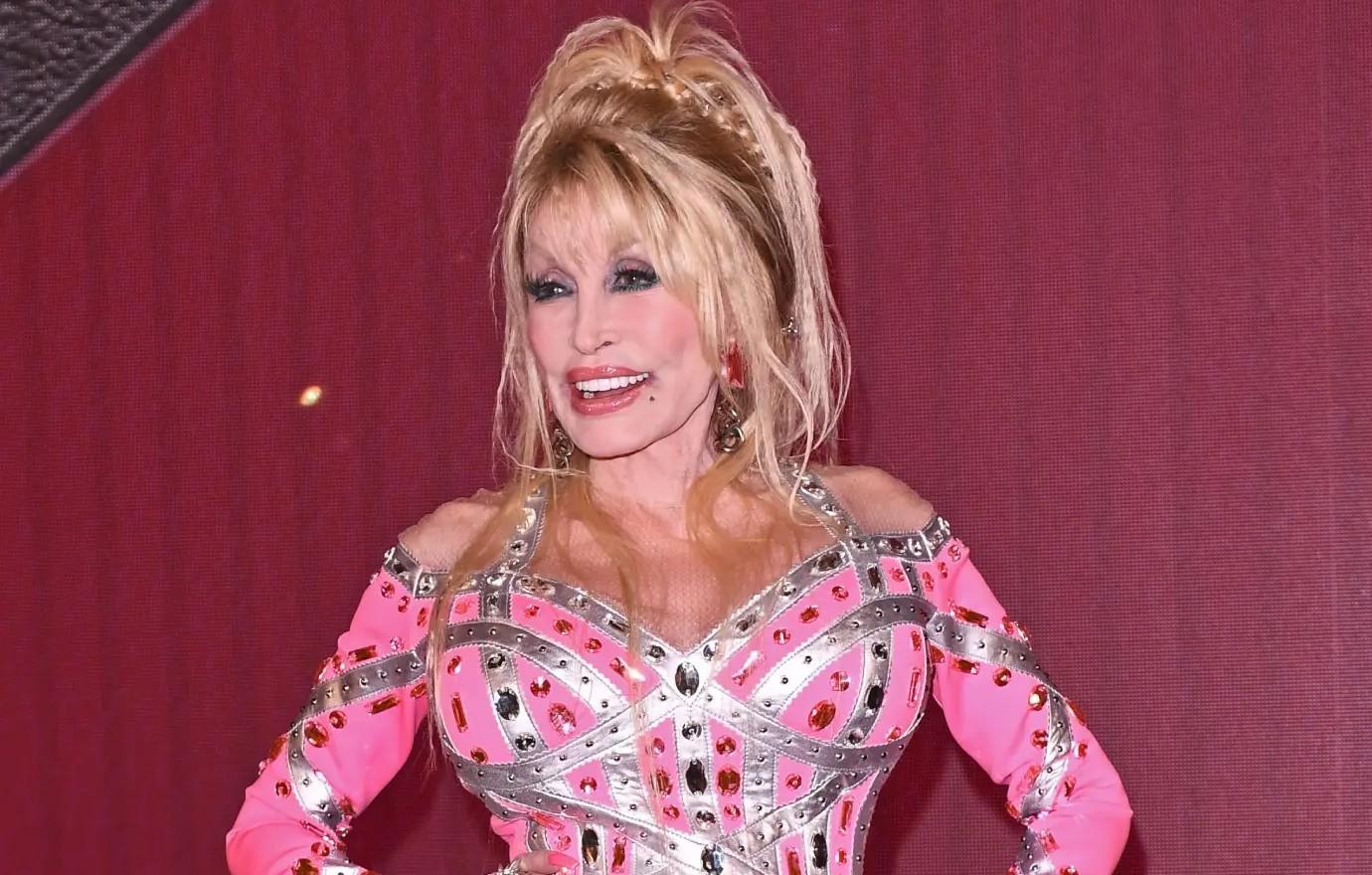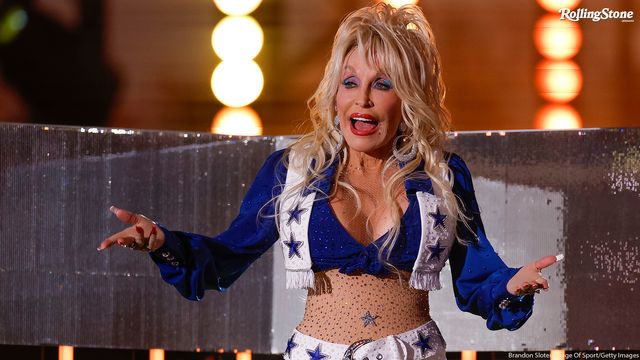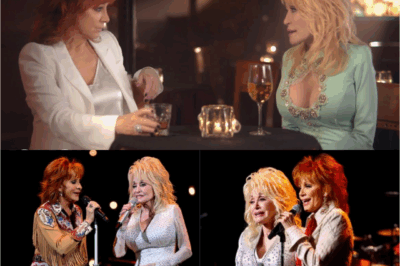Dolly Parton: Behind the Iconic Smile and the Hidden Feud with Linda Ronstadt
Dolly Parton, widely celebrated for her luminous personality and remarkable contributions to country and pop music, has captivated audiences worldwide for decades.
However, behind her ever-present smile and bubbly persona lies a story less commonly told: a turbulent relationship and rumored feud with fellow music legend Linda Ronstadt.
Born Dolly Rebecca Parton on January 19, 1946, in a modest one-room cabin near Tennessee’s Little Pigeon River, Parton rose from poverty and hardship to become a global icon.
Her parents, Robert Lee Parton and Avie Lee Caroline Owens, raised 12 children in challenging financial conditions. The family’s struggles lacked modern conveniences such as electricity and indoor plumbing, but music became a source of joy and hope in Dolly’s early life.

Influenced deeply by her mother’s singing of traditional ballads and church hymns, Dolly nurtured her passion for music from a young age.
By the time she turned eight, Dolly’s uncle Bill Owens gifted her first real guitar, marking a turning point in her life. She began composing her own songs, dreaming of a musical career that seemed distant yet promising.
The Appalachian cultural traditions of storytelling through music profoundly shaped her future artistic style.
As Dolly moved into her teens, her musical journey quickly gathered pace. Performing regularly on local East Tennessee shows such as the Cass Walker Show, she gained vital exposure and honed her stage presence
Determined to pursue her dreams, she moved to Nashville after high school graduation in 1964, initially facing typical struggles for a newcomer.

However, her undeniable songwriting talent soon caught the industry’s attention. Her first significant songwriting success came with “Put It Off Until Tomorrow,” earning a BMI award and signaling the start of her rise in the country music world.
Parton’s major breakthrough came when she joined Porter Wagoner’s television show in 1967. Under Wagoner’s mentorship, Dolly gained significant popularity and began to build her solo career alongside successful duets.
However, after seven years, she sought independence, releasing “Just Because I’m a Woman,” signaling her determination to establish her identity separate from Wagoner.
The 1970s saw Dolly’s solo career flourish dramatically. Her hits, including the timeless “Jolene” (1973) and “I Will Always Love You” (1974), solidified her reputation as an exceptional storyteller and performer.
Her effortless blend of country charm with pop sensibilities led to massive cross-genre success. Her 1977 album “Here You Come Again” marked her definitive crossover into mainstream pop music, demonstrating Dolly’s versatility and expanding her reach to a broader audience.

The 1980s marked a new direction for Dolly as she ventured into acting. Her debut film “9 to 5” (1980) became a cultural phenomenon, showcasing her comedic talent and further propelling her musical career with the accompanying hit song of the same name.
Additional acting successes followed, including “The Best Little Whorehouse in Texas” (1982), reinforcing her status as a multifaceted entertainer.
Amidst her flourishing solo career, Dolly entered an intriguing yet complicated collaboration in the late 1980s with two music powerhouses, Linda Ronstadt and Emmylou Harris.
In 1987, they formed the supergroup “Trio,” releasing a critically acclaimed album celebrated for harmonizing their distinctive voices and musical backgrounds. However, behind the harmonious vocals lay considerable tension, primarily between Parton and Ronstadt.
Recording their second album became a particularly strenuous experience. Scheduling conflicts and clashes over musical style and pace strained the relationship significantly.
Ronstadt, known for her meticulous studio work, often clashed with Parton’s preference for efficiency and quicker sessions. Dolly once expressed frustration over Ronstadt’s painstaking approach, famously remarking how Ronstadt’s slow pace “drives me nuts.”
The tensions escalated to the point where Ronstadt and Harris even considered proceeding as a duo, excluding Parton. However, Dolly insisted on recording exclusively as a trio.

This conflict significantly delayed their second album, originally planned for the mid-1990s but finally released in 1999 after extended disagreements and logistical issues.
Parton, in her 1994 autobiography “Dolly: My Life and Other Unfinished Business,” candidly acknowledged her role in the friction, admitting guilt over the delays and complications.
Beyond professional conflicts, social differences also played a substantial role in their strained relationship. Ronstadt, whose social circles included major celebrities and rock stars, hosted events that left Dolly feeling uncomfortable and alienated.
Don Roth, Ronstadt’s guitarist, revealed Dolly’s unease at such gatherings, explaining that Dolly often felt “scared of big city people” and preferred staying away from Ronstadt’s lavish social scene.
Roth emphasized that Dolly’s perceived aloofness stemmed from discomfort, not arrogance, highlighting a stark contrast between their worlds.
Despite their differences, the “Trio” albums experienced remarkable commercial and critical success. Their first album went multi-platinum and won a Grammy, solidifying their status as an iconic collaborative group.
Even the troubled second album, released amidst unresolved tensions, achieved Grammy recognition, with the song “After the Gold Rush” winning Best Country Collaboration.

Dolly’s career in the subsequent decades remained vibrant and diverse. She explored bluegrass, ventured into Broadway with the musical adaptation of “9 to 5,” and expanded her entrepreneurial pursuits, notably with the success of her theme park, Dollywood.
Dolly’s ongoing philanthropy, notably through her Imagination Library initiative promoting children’s literacy, further solidified her beloved public image.
In recent years, Dolly’s induction into the Rock and Roll Hall of Fame in 2022 and the release of her 2023 album “Rockstar” highlight her continued relevance and versatility. Meanwhile, her legacy includes vinyl reissues of classic albums, allowing new generations to rediscover her timeless music.
Though Dolly Parton and Linda Ronstadt’s rumored feud was marked by significant professional and personal differences, their collaborative legacy endures.
Despite tensions and social barriers, the “Trio” project remains a celebrated chapter in music history, reflecting the complexity of artistic collaboration.
Ultimately, Dolly Parton’s enduring charm and extraordinary career trajectory underscore her resilience and ability to overcome challenges both personally and professionally.
Her relationship with Ronstadt exemplifies the nuanced realities behind celebrity collaborations, demonstrating that even iconic partnerships are rarely without friction, yet capable of producing timeless music.
News
“I Still Miss Him”: Dolly Parton Breaks Down Mid Song as Reba McEntire Joins Her for Heart Shattering Tribute to Late Husband Carl Dean.
“I Still Miss Him”: Dolly Parton Breaks Down Mid Song as Reba McEntire Joins Her for Heart Shattering Tribute to…
This guitar carried my soul on its strings when no one knew my name…
In the electric silence that follows a singer’s last note, when the world holds its breath in anticipation of what’s…
The Voice reveals 4 returning coaches for season 28 including Niall Horan and Reba McEntire
The duo will be joined by fellow show alums Michael Bublé and Snoop Dogg. Nial Horan and Reba McEntire on…
Reba McEntire: “Drag Queens Don’t Belong Around Our Kids”
Reba McEntire Sparks Controversy with Statement on Drag Queens and Children. Country music legend Reba McEntire has found herself at…
Reba, Miranda Lambert, & Lainey Wilson Debut Powerful New Song, “Trailblazer,” At The ACM Awards
“Trailblazer” Is A New Song That Celebrates The Influential Women Of Country Music’s Past And Present Reba McEntire, Miranda Lambert, and Lainey…
Jennifer Aniston made a surprise appearance with a dazed expression and an unresolved…
Jennifer Aniston is no stranger to the public eye. For decades, she’s been one of the most beloved faces in…
End of content
No more pages to load












